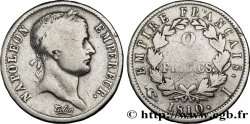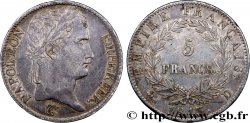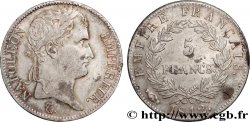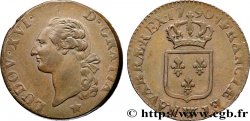Live auction - fme_1066618 - NAPOLEON'S EMPIRE Médaille, Bataille d’Austerlitz, refrappe
Чтобы принять участие в торгах, вы должны войти в систему и стать подтвержденным участником аукциона. Войдите, чтобы сделать ставку. Ваш аккаунт будет подтвержден в течение 48 часов. Не ждите до закрытия торгов, чтобы зарегистрироваться.Сделав ставку на данный товар, вы вступаете в юридическое соглашение на покупку выбранного товара и нажатием кнопки «Сделать ставку» подтверждаете принятие вами условий интернет-аукционов cgb.fr.
Ставка может бить сделана только в полном эквиваленте евро. Торги закроются согласно времени, указанному в описании товара, все ставки, сделанные после закрытия торгов, учитываться не будут. Не следует откладывать предложение вашей ставки до последнего момента, так как система может не успеть обработать вашу заявку, и ваша ставка не будет принята. Более детальную информацию вы найдёте здесь: FAQ по интернет-аукционам.
Все ставки победителей подлежат комиссии 18%.
Все ставки победителей подлежат комиссии 18%.
Тип Médaille, Bataille d’Austerlitz, refrappe
Дата: (1805)
Монетный двор / Город: Monnaie de Paris
Количество отчеканенных монет: ---
Металл: bronze
Диаметр: 40,5 mm
Ориентация осей монеты: 12 h.
Гравер ANDRIEU Jean-Bertrand (1761-1822) - DENON Dominique Vivant (1747-1825)
Вес: 30,90 g.
Век: lisse + corne BRONZE
Пуансон: corne BRONZE
Комментарии о состоянии
Patine marron hétérogène avec des marques d’usure sur certains hauts reliefs. Présence de quelques rayures
Ссылки в каталоге: :
Лицевая сторона
Аверс: легенда: BATAILLE - D’AUSTERLITZ // À L’EXERGUE : II. DECEMBRE/ MDCCCV..
Аверс: описание: Tête laurée de Napoléon à droite, signé sur le tranché du cou : ANDRIEU F..
Обратная сторона
Реверс: легенда: ALEXANDRE I. - FRANCOIS II.
Реверс: Описание: Bustes laurés et affrontés d’Alexandre de Russie et de François d’Autriche; signé : ANDRIEU.F DENON F..
Комментарий
La bataille d’Austerlitz, surnommée la « bataille des Trois Empereurs », se déroule le 2 décembre 1805 au sud de la Moravie (République tchèque), et plus précisément entre Brünn et Austerlitz. Après neuf heures de combats, la Grande Armée de Napoléon bat les forces autrichiennes de l’empereur François Ier et celle du tsar Alexandre. L'Angleterre, bien qu'invaincue, reste seule, ce qui met fin à la troisième coalition. Outre son importance stratégique, cette bataille est considérée comme le chef d'œuvre tactique de Napoléon, et, est encore enseignée de nos jours dans de nombreuses écoles militaires. C’est, en effet, la seule bataille où Napoléon a pu choisir le terrain, y amener l'ennemi et lui imposer son plan : les autres ont été soit des batailles de rencontre plus ou moins improvisées (Marengo, Iéna, Eylau, Lutzen, Dresde), soit des forcements de positions où l'ennemi préféra attendre l'Empereur (Friedland, Wagram, la Moskowa).
The Battle of Austerlitz, nicknamed the \\\"Battle of the Three Emperors,\\\" took place on December 2, 1805, in southern Moravia (Czech Republic), more precisely between Brünn and Austerlitz. After nine hours of fighting, Napoleon's Grande Armée defeated the Austrian forces of Emperor Francis I and Tsar Alexander. England, although undefeated, remained alone, thus ending the Third Coalition. In addition to its strategic importance, this battle is considered Napoleon's tactical masterpiece and is still taught today in many military schools. It is, in fact, the only battle where Napoleon was able to choose the terrain, bring the enemy there and impose his plan on him: the others were either more or less improvised encounter battles (Marengo, Jena, Eylau, Lutzen, Dresden), or forcing of positions where the enemy preferred to wait for the Emperor (Friedland, Wagram, Moskowa)
The Battle of Austerlitz, nicknamed the \\\"Battle of the Three Emperors,\\\" took place on December 2, 1805, in southern Moravia (Czech Republic), more precisely between Brünn and Austerlitz. After nine hours of fighting, Napoleon's Grande Armée defeated the Austrian forces of Emperor Francis I and Tsar Alexander. England, although undefeated, remained alone, thus ending the Third Coalition. In addition to its strategic importance, this battle is considered Napoleon's tactical masterpiece and is still taught today in many military schools. It is, in fact, the only battle where Napoleon was able to choose the terrain, bring the enemy there and impose his plan on him: the others were either more or less improvised encounter battles (Marengo, Jena, Eylau, Lutzen, Dresden), or forcing of positions where the enemy preferred to wait for the Emperor (Friedland, Wagram, Moskowa)








 День закрытия торгов
День закрытия торгов  Cообщить об ошибке
Cообщить об ошибке Распечатать страницу
Распечатать страницу Отправить мой выбор
Отправить мой выбор Задать вопрос
Задать вопрос Consign / sell
Consign / sell
 Информация
Информация















